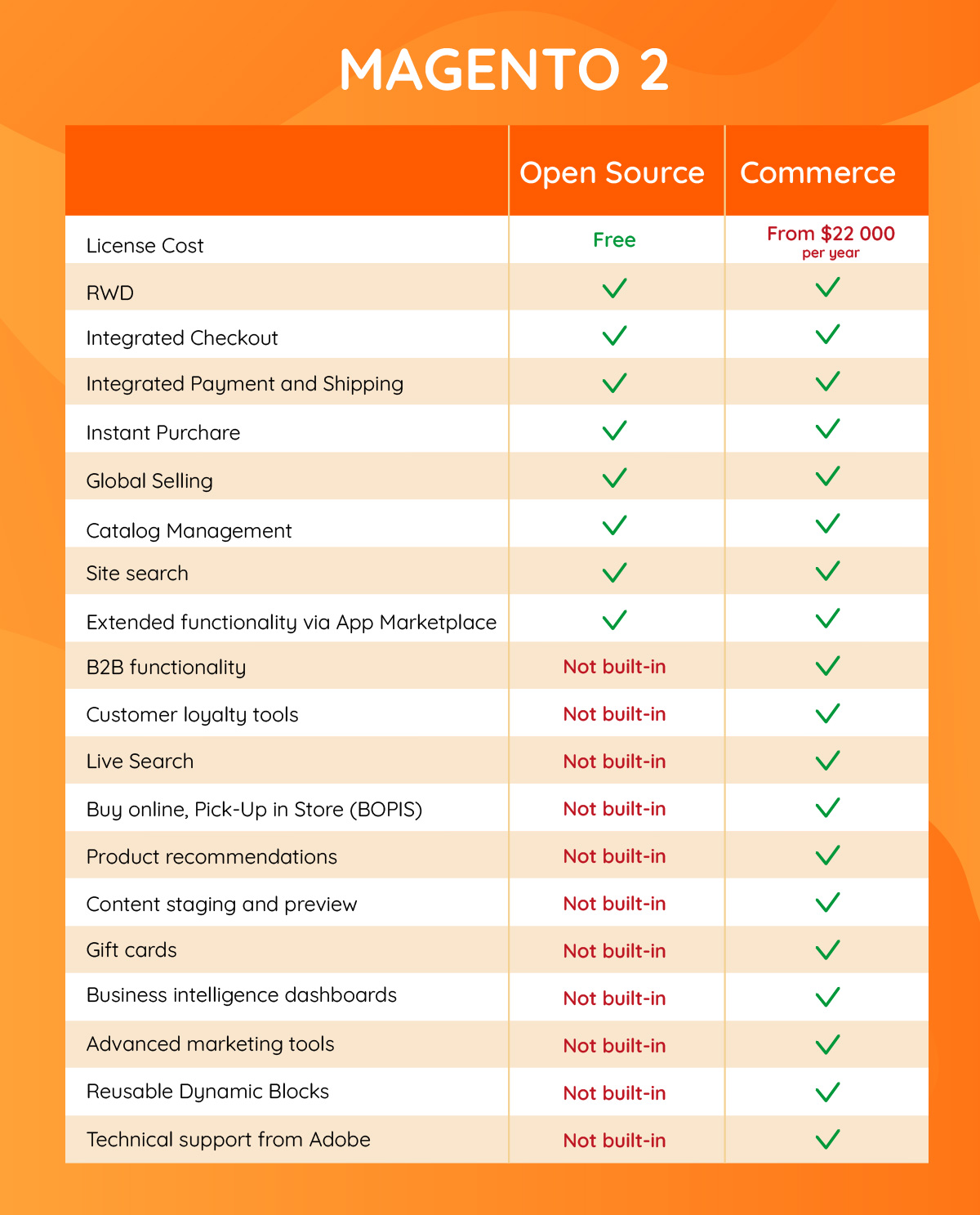Magento 2 comes in two versions: Magento Open Source (formerly known as Magento Community) and Adobe Commerce (formerly known as Magento Enterprise). Open Source is free and the license for Adobe Commerce is quite high. What are we really paying for? See what are the differences between the Magento 2 versions.
Magento Open Source vs Commerce
Licences and Pricing
Magento Open Source – It is a totally free version of Magento. The costs you will incur are the cost of employing a development company, server and store management service. Creating dedicated plugins for the platform may be an additional cost.
Adobe Commerce – You can choose between an on-premises implementation and a cloud-based solution with the Magento Commerce licence. The gross income of the store determines how much an Adobe Commerce licence will cost. the higher the sales, the more expensive the licence. We also receive developer-specific versions when purchasing licences. The cost of the license starts at $ 22,000.
Please be aware that you can bargain with Adobe about the cost or the conditions of the licence to get a better offer for example doesn’t pay before implementation.
Magento Open Source vs Commerce
Comparison of functionality
Main features
Both the free and paid versions come with basic functionalities that enable purchase (shopping cart, payments, shipping). Additionally, both versions have a built-in instant purchase solution. The built-in is also a search engine. Unfortunately, the functionalities of the B2B store are only in the Adobe Commerce version.
Scalability
Although the Magento Open Source version is a pretty well-scaled platform, its capabilities are restricted, necessitating a move to the Commerce version if the store starts having massive product and visitor loads. In today’s world, even a fraction of a second of loading a page can be the cause of losing customers.
Marketing tools
With its array of useful features for marketing and targeting, Magento Commerce once more outperforms Magento Open Source. These include the GEO targeting feature (displaying products to customers based on their locations), customer segmentation, targeted content, and abandoned shopping cart notifications. All of these elements can help in increasing sales volume with the least amount of work.
Catalog management
This functionality is included in both Magento Open Source and Magento Commerce however in Open Source is simplified. A loyalty programme, gift cards, product recommendations, and complete product export are just a few of the extra features offered by Adobe Commerce.
Security
Adobe Commerce is far more reliable than Magento Open Source in terms of security. Open Source lacks payment security and credit card tokenization because they are elements necessary for secured transactions. The fact that the free version does not adhere to PCI DSS security is another significant problem.
Third-party integration
Due to its compatibility with a lot of third-party extensions, Magento Open Source is better. You can integrate with the PIM system, Google Analytics, chat software, email management system, social media, etc.
Magento Open Source vs Commerce
Conclusion
Ultimately, your business’s demands and budget will determine which Magento edition is best for it. Open Source is a very robust and adaptable platform, and you can always extend into Commerce on-Premises or Cloud for more features as your business expands. Businesses that don’t want to worry about obtaining and maintaining separate servers might consider a cloud option. For businesses that already have their own tested servers and want total control over the hosting process, the on-premises solution will work.Want to start a project?
B4SPOT team will be excited to take your ideas into action. Please contact us right away to discuss your journey.


Greetings! Very useful advice in this particular post! Its the little changes that will make the most significant changes. Thanks for sharing!